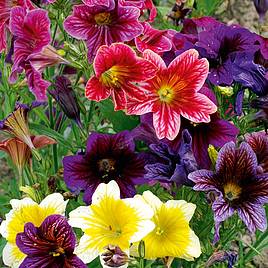Discovered by a French monk who named them after a 16th century German botanist, fuchsia plants are native to the Caribbean island of Hispaniola. Despite their tropical origins, this garden stalwart is often hardy enough to make it through our British winters, and is a great choice for anyone who loves the vibrant purples and pinks this plant offers.
Where to grow fuchsias
Fuchsias prefer a moist but well-drained soil, and thrive in a reasonably sheltered spot that offers a mixture of sun and shade through the day. Depending on the variety you choose, these plants are also a great choice for growing in pots and patio containers. Although even the most tender of fuchsias are quite weather-resistant, half-hardy varieties can struggle in northern areas. If it’s likely to get very cold, either cover your plants over with fleece, or move them inside for the winter.
How to plant fuchsias
To plant your fuchsias, dig a hole a little larger than your plant’s root ball. Next, add some well-rotted compost to the soil and, placing the plant into the hole so that the top of the roots are level with the soil, backfill it and tamp down firmly to remove any air pockets and to stabilise the plant. Add a mulch to improve water retention, and water well.
How to care for fuchsias
Once established, you’ll need to give your hardy fuchsias a prune each spring. Half-hardy varieties are best done in the autumn before you move them inside or cover them over for the winter. To do this, first remove any dead or diseased material and dispose of it with your household waste. Clip the plant to the desired size and shape, always cutting above a healthy bud and then give your secateurs a thorough clean before moving on to the next bush.
Fuchsias are a lovely garden plant that lends a touch of the exotic to front and back gardens everywhere. To find out more, head over to our guide on how to grow fuchsias where you’ll find all the helpful information you need to get started.




